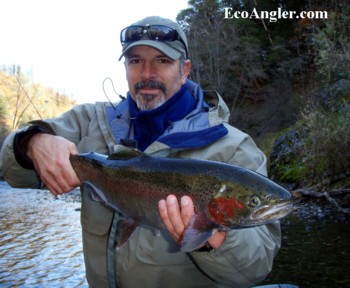Directions
From Redding From Interstate 5, take Highway 299 going East. Drive about 39 miles to reach Douglas City and turn left out of the highway onto Steiner Flat Road.
Trinity River - Steiner Flat to Sky Ranch (Junction City)
I'll let the pictures speak to the steelheading on the Trinity River for 2009. Those pictures, however, don't tell the whole story. Sure you don't see other boats and anglers stacked up in the background. But they were there in numbers.
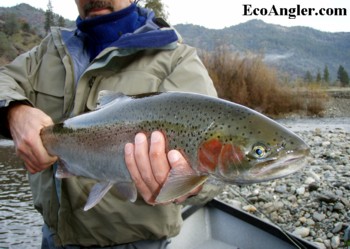
The story not told (unless you look real close) is the growing percentage of hatchery raised steelhead present in this run. In past seasons, the steelheading-hookup-euphoria blinded me from seeing the cracks-forming-in-the-foundation.
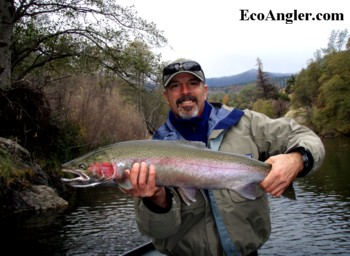
Robert Behnke outlined the dangers of introducing hatchery rasied steelhead to "supplement" the wild ones in his 1985 column for Trout Magazine: ...each particular (steelhead) life history strategy has been evolved through thousands of years of natural selection in each specific environment to optimize those life history traits that result in best survival. Hatchery selection replaces natural selection from the time of spawning to the time of smolting, and this has resulted in hereditary changes in hatchery stocks such as earlier timing of runs, earlier spawning, adaptions to artificial diets, disease resistance, crowding, etc.

The end result is that hatchery steelhead, selected for many generations, and usually from a nonnative stock in relation to the river of stocking, have much reduced reproduction fitness in comparison to any native population. The large-scale stocking of hatchery fish leading to a predominance of hatchery fish in spawning runs may be a major cause in the decline of wild steelhead.

Behnke points out a study lead by Loyd Royal submitted to the Washington Game Department back in 1972 which clearly showed increasing hatchery steelhead were suppressing their wild families. The study showed 20 to 50 percent of the hatchery fish were not migrating to sea but stayed in freshwater to ultimately compete for food and habitat with wild juvenile steelhead.
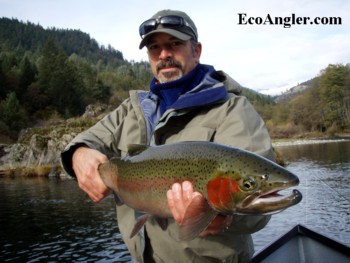
Later study on the Deschutes River in Oregon and the Kalama River in Washington also revealed that hatchery fish entering these rivers are less adapted and suffer higher mortality than wild steelhead in their age-class. This certainly impacts those wild fish since they are forced to compete for a limited supply of food and water in which to hide from predators.
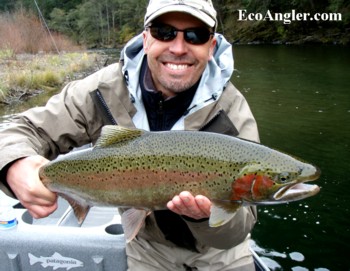
I'll close with a quote from a long-time steelheader, and an advocate for wild steelhead - Peter W. Soverel. Curiously , anglers, rarely confront the reality that, more than anything else, our sport depends upon the existence of abundant, diverse, widely distributed wild steelhead across the full diversity of habitats. These conditions are disappearing before our eyes. Equally astonishing, anglers accept these declines without complaint as if a diminished future were the inevitable outcome. In the span of a single human lifetime, we have largely eliminated wild steelhead from vast areas of their native range, from the immense Central Valley systems in California to the Columbia and Fraser watersheds of the north.
